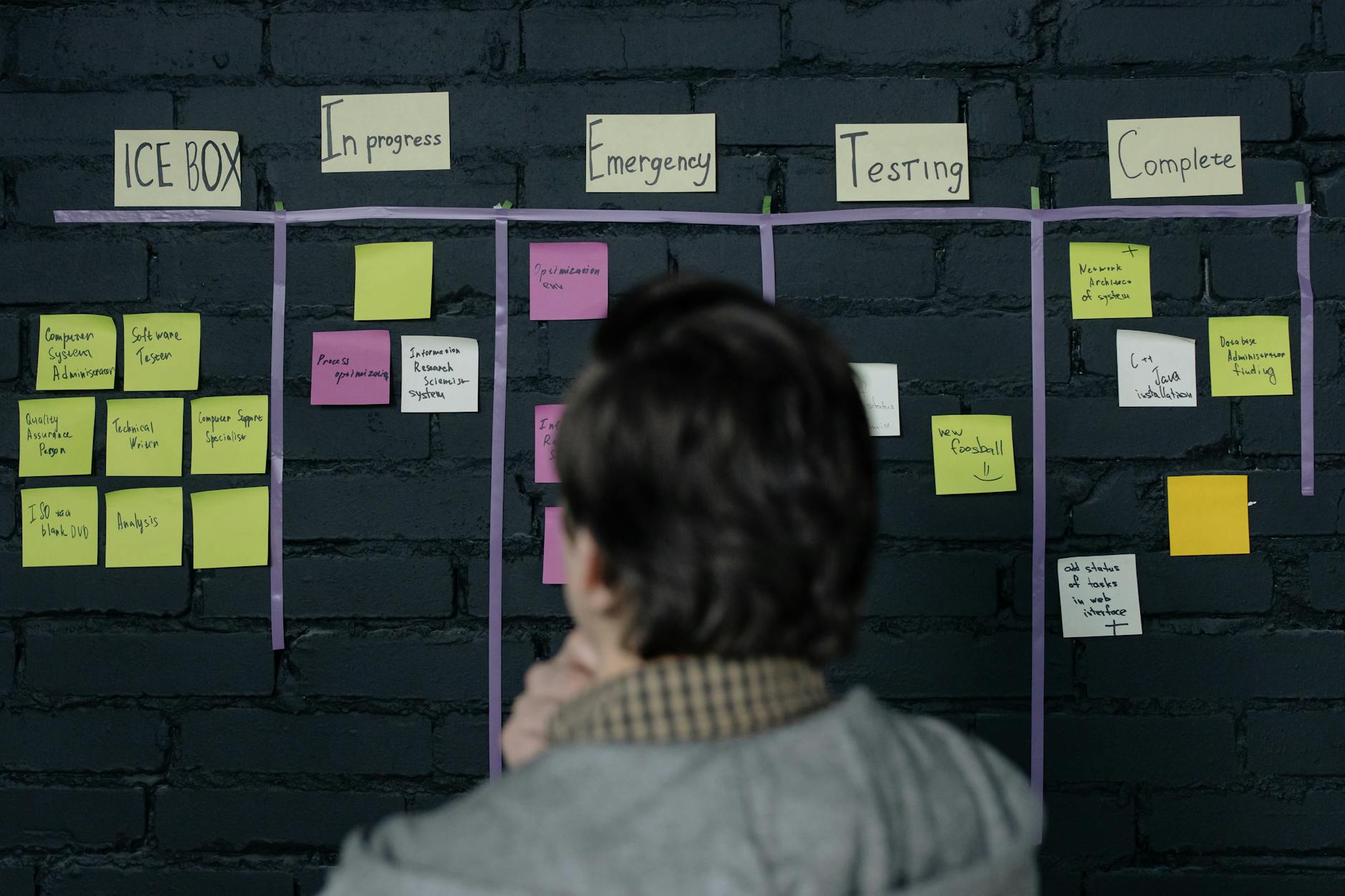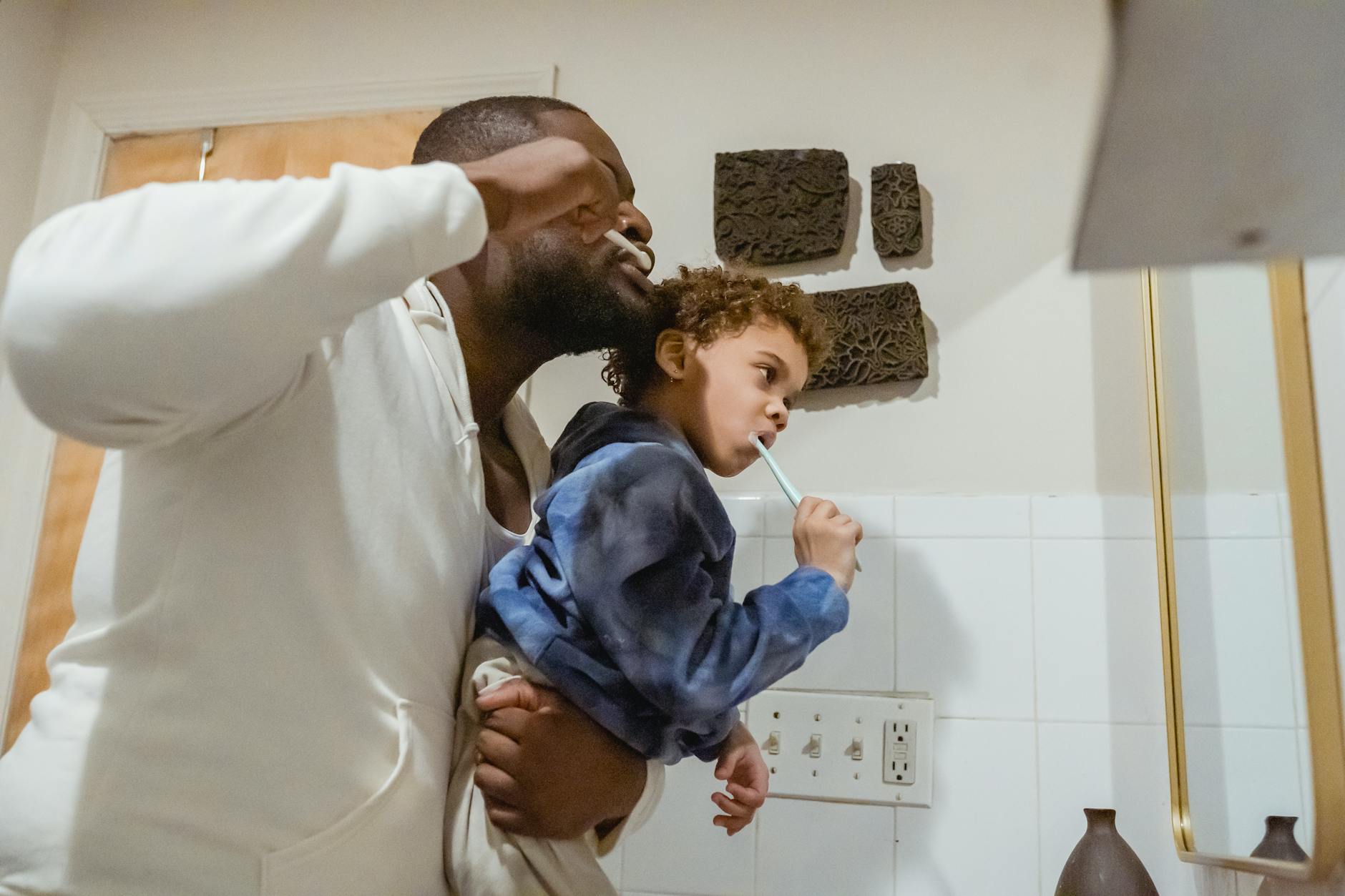This post contains affiliate links. If you purchase through these links, I may earn a commission at no extra cost to you. As an affiliate, I earn from qualifying purchases.
Helping kids stay organized—whether at school or at home—is an ongoing challenge for many parents and teachers. From forgotten assignments to cluttered desks, it can feel overwhelming to help children manage their time and space effectively. But organization isn’t just about keeping things neat; it’s a key skill that sets the foundation for success in academics and beyond. By using creative strategies, you can simplify routines, make tasks fun, and build lifelong habits that teach responsibility and independence. This post will share practical ideas to make staying organized easier for kids—and for you too.
Why Organization Matters for Kids
Helping kids develop organizational skills early isn’t just about keeping their rooms tidy or ensuring they submit homework on time. It’s about equipping them with tools that contribute to better focus, lower stress, and greater independence. When kids learn to organize their time and belongings, they build habits that can benefit them academically, socially, and emotionally.
The Link Between Structure and Success
Routines and structure are invaluable for children because they provide a sense of security and predictability. Kids thrive on knowing what to expect—and when. This steadiness lets them focus on their tasks without the constant stress of wondering what’s next.
- Improved Academic Performance: A structured environment helps kids manage their schedules, like knowing when it’s time to study versus when they can relax. Studies show that having a set routine can improve focus and time management, leading to better grades.
- Enhanced Social Skills: Just as order in physical spaces makes learning easier, a structured approach to social interactions helps kids navigate friendships. For example, group work in classrooms requires shared responsibilities—being organized ensures they remember their role in the project.
When kids have organization as a foundation, they become more confident in school and life. These habits can free up their energy for creativity and problem-solving. Want to dive deeper into why structure supports young learners? Check out this resource on teaching kids the value of organization.

Photo by Vanessa Loring.
Recognizing Organizational Challenges
Even with structure, kids often struggle to stay organized. But why? The reasons aren’t always obvious. Understanding these challenges allows parents and teachers to offer targeted support.
- Lost Homework and Supplies: One common issue kids face is misplacing school supplies or assignments. Disorganization might stem from not having a clear place to store things, which overwhelms them.
- Trouble Prioritizing Tasks: Many children struggle because they don’t know how to decide what to do first. Whether it’s a lack of guidance or internal distractions like difficulty focusing, it’s a skill that needs to be taught over time.
- Distractions: Younger children, in particular, can be easily sidetracked by new toys, phones, or even their own thoughts. This makes simple tasks, like packing a school bag, seem daunting.
Some challenges also stem from brain development. For instance, executive function—the part of the brain responsible for planning and organizing—takes time to mature. Curious about why kids face these hurdles? Take a look at why children have trouble with organization.
By recognizing these difficulties, caregivers can adapt their strategies to meet individual needs. Do kids always lose their library books? Try a designated spot for returns. Trouble managing homework? A daily checklist might help. Each solution builds small steps toward bigger organizational wins.
Creative Tools and Systems for Staying Organized
When it comes to staying organized, the tools and systems you use can make all the difference, especially for kids. By incorporating both creative and functional methods, you can create an environment where being organized becomes second nature. From visual aids like color-coded systems to digital tools designed for older kids, here are practical ideas to keep everyone on track.
Using Color-Coded Systems
Color coding is an incredibly simple yet effective way to create clarity and reduce confusion. It provides a visual cue that helps kids locate what they need at a glance.
- School Supplies: Assign a specific color to each subject. For example, math workbooks and folders could be blue, while science materials are green. This visual system streamlines decision-making during chaotic moments like scrambling to pack their bag in the morning.
- Homework Organization: Use color-coded sticky flags or tabs for homework assignments. Kids can mark urgent tasks in red and less pressing items in yellow, ensuring priorities are clear.
- Classroom Labels: Teachers can use colorful tape or markers to divide classroom resources. For instance, green bins for art supplies and yellow bins for reading materials help students independently find and return items.
Visual organization tools like these give children a mental shortcut, making it easier for them to stay on top of their responsibilities.

Photo by cottonbro studio.
Classroom-Friendly Organization Ideas
Keeping a classroom organized might feel like an impossible task, but it’s all about creating systems that empower kids to take ownership of their space. These ideas promote independence while reducing chaos:
- Turn-In Bins: Have separate bins for completed work, late assignments, and extra credit. Label them clearly so kids know exactly where to submit their tasks.
- Labeled Cubbies or Lockers: Assign dedicated spaces for jackets, backpacks, and personal items. Add name tags or pictures to make it easy for younger kids.
- Classroom Jobs: Encourage responsibility with fun roles like “supply organizer” or “calendar updater.” Not only does this distribute the workload, but it also teaches teamwork.
Simple, interactive strategies like these keep the classroom running smoothly, ensuring less stress for everyone involved. For additional ideas, check out the Top 5 Tools for Classroom Organization.
Digital Tools for Older Kids
As kids grow, their schedules become busier. Digital tools can be incredibly helpful for managing assignments, extracurricular activities, and other commitments.
Some standout apps include:
- Google Calendar: Works across devices and allows kids to set reminders for deadlines and events. They can also color-code tasks!
- Evernote: A user-friendly app where students can jot down notes, scan handouts, and track projects in one place.
- iHomework: Designed specifically for students, this app simplifies task tracking by organizing assignments in a clean, intuitive interface.
Apps like these are perfect for older children or teens juggling multiple responsibilities. If you’re looking for even more options, check out The Best Apps and Tools to Help Kids Organize Schoolwork.
When choosing apps, start with simple features so kids aren’t overwhelmed. Over time, they’ll learn to harness these platforms to plan ahead and succeed without constant reminders from adults.
Buy this if you want a versatile ePaper tablet that excels in note-taking and reading with a responsive stylus and access to the Google Play Store.
Building Daily Routines at Home
Creating consistent daily routines at home is one of the most effective ways to help kids stay organized and reduce stress for the whole family. Routines provide a sense of structure and predictability that kids inherently crave, making it easier for them to manage their time and responsibilities.
The Power of a Command Center
A family command center is an essential tool for keeping everyone on the same page, especially in busy households. Think of it as a central hub where schedules, important tasks, and to-dos come together to create clarity.
- What to Include: A successful command center typically has a calendar for family events, a whiteboard for reminders, and a spot for task lists or chore charts. You can even add a mail organizer for permission slips or bills.
- Visibility is Key: Place the command center in high-traffic areas like the kitchen or hallway, where everyone will see it daily. If your kids know where to check for their upcoming soccer practice or science project due date, they’ll feel more in control.
If you’re ready to set up your family command center, take inspiration from these ideas to create a space that works for your family.
Buy this if you need an eco-friendly desk organizer that combines functionality with a stylish design.
Breaking Tasks Into Manageable Chunks
Big projects can easily overwhelm kids, whether it’s finishing a school project or organizing their room. Teaching them how to break tasks into smaller, actionable steps helps to build confidence and focus.
- Step-by-Step Guides: Start by listing all the tasks needed to complete the project. For example, if they’re working on a book report, break it down into reading the book, taking notes, creating an outline, and writing a draft.
- Set Achievable Goals: Encourage your child to focus on completing one step at a time rather than tackling everything all at once. Use timers to make each session manageable, such as 20 minutes dedicated to studying or cleaning.
- Visual Progress: Checklists or progress charts can help visual learners stay motivated. They’ll feel a sense of accomplishment each time they cross an item off the list.
Learn proven strategies to help your child break down big tasks with this guide.
Morning and Nighttime Prep Habits
Starting and ending the day on a positive note can set the tone for how well kids stay organized. Morning and nighttime preparation helps eliminate chaos, giving kids (and parents) a smoother routine.
- Night Before Prep:
- Pack school bags with homework, supplies, and snacks.
- Lay out clothes for the next day (minimizing morning wardrobe battles).
- Create a goal for the following day, such as finishing a small homework assignment or practicing a skill.
- Streamlined Mornings:
- A consistent wake-up time and simple tasks, like making the bed and brushing teeth, ensure mornings run more smoothly.
- Keep a breakfast routine to save time—easy options like oatmeal or pre-prepped fruits work wonders.
- Use a checklist for younger kids who might need reminders about what’s next.
For additional tips, check out this guide to establishing morning and evening routines. Small changes now can build lasting habits.

Photo by Keira Burton.
Keeping the Momentum: Motivation and Rewards
Keeping kids motivated to stay organized can be one of the trickiest parts of teaching them this essential life skill. But with a little creativity, you can make organizing not only engaging but also rewarding. Transforming daily tasks into fun activities and offering positive reinforcement when goals are achieved are both key.
Gamify Organization
Kids love games, so why not tap into that enthusiasm to make organizing exciting? Turning mundane chores into challenges introduces an element of fun that keeps kids coming back for more.
Here are a few ways you can gamify organization:
- Create a Treasure Hunt: Hide items (like a missing pair of socks during a laundry sort) and make it a race to find and put things back in their proper place. Offer small rewards for completing the challenge.
- Leaderboard in the Household: Track who maintains the neatest workspace throughout the week. Hand out points for tidying up, returning books to shelves, or finishing tasks on time.
- Timed Cleanups: Set a timer for five or ten minutes and challenge kids to organize as much as possible before the buzzer. It’s great for quick bursts of tidying without dragging on their attention spans.
Applying game-like elements to ordinary tasks doesn’t just keep kids focused—it also builds consistent habits, which is the ultimate prize. For more ideas on how to gamify everyday organization, check out Gamified Task Management for Kids.

Photo by Ron Lach.
Incentives That Work
Who doesn’t love a reward after a job well done? Kids are no different. Rewards encourage them to stick with habits while making them feel proud of their accomplishments. The trick is creating incentives that genuinely motivate without overcomplicating things.
Here are some simple reward systems that work wonders:
- Sticker Charts: For younger kids, a visual progress tracker like a sticker chart is incredibly motivating. Add stickers for tasks completed (like organizing toys or finishing homework), and let them trade completed rows for small prizes like a favorite snack.
- Extra Playtime: Instead of material rewards, provide extra playtime for staying on track with their organizational goals. It could be 15 minutes of screen time or a longer trip to the park.
- Token System: Hand out tokens or points that can be saved up for bigger rewards—like a movie outing or choosing what’s for dinner. It mirrors real-world skills like budgeting and saving.
- Special Privileges: Let older kids earn privileges, like picking the family game night activity or getting an extra story before bed.
These rewards don’t need to be extravagant—it’s the thought behind them that makes kids feel appreciated. For helpful examples of effective reward systems, take a look at 20 Reward System Ideas for Kids and Teens.
By introducing both gamified tasks and incentive-based systems, you’re not just organizing your child’s physical environment—you’re giving them tools to stay motivated and develop intrinsic habits that will benefit them for years to come.
Role of Teachers and Parents in Organization
Helping kids stay organized isn’t just a one-sided task; both teachers and parents play critical and complementary roles in fostering good habits. While teachers create structured environments where students can thrive academically, parents reinforce these practices at home to ensure consistency. This partnership is essential for shaping skills that help kids navigate school and life with confidence. Here are practical ways for both to contribute.
Teacher Tips for Classroom Organization
Teachers are at the forefront of building routines and systems that help students stay focused and efficient throughout the school day. By incorporating creative organizational methods into the classroom, educators can simplify tasks and teach responsibility.
Here are a few effective strategies:
- Provide Written Assignments: Always give clear, written instructions for assignments. This ensures students have a point of reference and can double-check their tasks if they forget. Written directions also aid kids who may struggle with verbal instructions.
- Assign Classroom Helper Roles: Kids love feeling important, so assigning roles like “paper passer,” “line leader,” or “board cleaner” can keep the classroom tidy while teaching them to take responsibility.
- Use Visual Aids: Posters, diagrams, and bulletin boards are excellent tools for organization. For example, a chart showing the order of daily activities or homework due dates helps create structure and visual clarity for students.
To explore additional insights on how teachers can improve classroom organization, consider these brilliant classroom organization ideas.
How Parents Can Reinforce at Home
Parents extend the foundation built in schools by making organizational practices a part of daily home life. Staying connected and proactive at home can help kids maintain their structure across all areas of life.
Here’s how parents can provide that reinforcement:
- Review Weekly Progress Together: Sit down with your child each week to review their homework, schedules, and any upcoming projects or events. This regular check-in helps identify areas where they might need more attention or support.
- Use Home Folders: Assign a folder for your child’s school-related items, such as permission slips, completed homework, and notices. Review it daily to ensure nothing slips through the cracks.
- Regular Check-Ins: A simple 5-minute chat at the end of the day about what went well and what needs improvement can boost your child’s confidence and accountability.
To understand how parents and teachers can collaborate effectively for a child’s benefit, read Building Parent-Teacher Relationships.
When both educators and caregivers work together, it provides children with the tools and consistency they need to thrive, whether in a busy classroom or the comfort of their home.
Conclusion
Helping kids stay organized at school and at home doesn’t need to be complicated. Small, practical strategies—like color-coded systems, gamified tasks, and structured daily routines—can make a big difference in their confidence and independence.
Teachers and parents play crucial but complementary roles. When both work together to create consistent, supportive systems, children gain the tools they need to thrive academically and emotionally.
Start with one or two simple ideas that fit your child’s needs or preferences. Building habits takes time, but each small step builds momentum toward lasting success.



